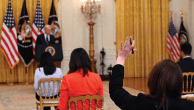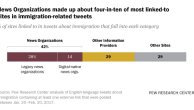[1]
What was that coverage from Iraq about? Is it possible to detect how those events were interpreted or put into a broader context? Who were the primary sources? How many points of view did the coverage provide? How did the coverage change over time?
To answer these questions the Project embarked on a two-part study. The first, a survey of journalists reporting from the war-torn county, was released mid-November.
In this second phase, the Project studied the content of the ground war coverage from January 1 through October 31, 2007. We began by identifying all stories from 40 of the 48 outlets in PEJ’s New Coverage Index (talk radio and radio headlines were excluded) that were coded as being about events on the ground in Iraq. From there, we selected one-third of the stories—a total of 1,109 stories—for additional analysis.
We then analyzed those stories by general topic, by underlying message, by the number of stakeholders represented, and by looking at what sources tended to dominate.
Footnotes1. Thus far in 2007, PEJ’s News Coverage Index has found that the policy debate, a story covered largely from Washington rather than Iraq, has made up the majority of Iraq war coverage. From Jan. 1 – Oct. 31, Iraq policy filled 9% of the overall newshole as measured in PEJ’s News Index during that time. The story of the homefront was the smallest part of the war coverage, 2% of the newshole and the 6th biggest topic in the media during those ten months.




